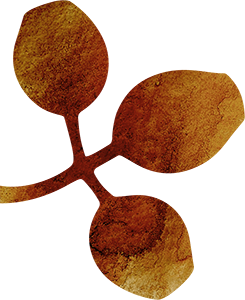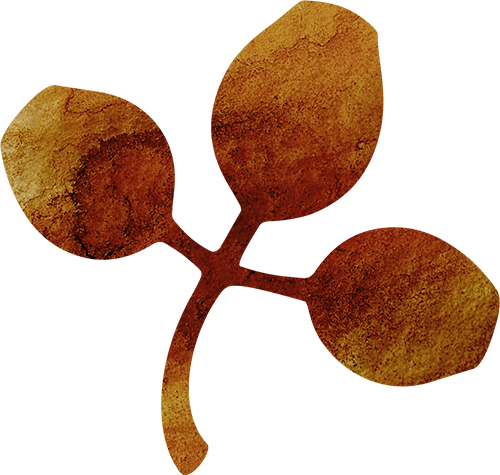A lot of environmental messages to kids these days are fear-based, but I’ve personally never found anxiety a helpful motivator. Anxiety tends to stifle creativity and build inflexibility; it can freeze and shut us down. But love… now you’re talking. Love is motivating, inspirational, exciting, energising, creative, and calling us forward into new places and ways to be. It speaks to our hearts as well as our minds, it lifts our spirit, it asks the deeper, quieter questions. Who do I want to be in the world? What are my passions? What shall I do with them? Where shall I go? What matters to me? ‘What do you want to do with your one wild and precious life?’ as poet Mary Oliver asks us.
So how do we fall in love with the natural world? With this extraordinary planet? With this place that sustains us in a seemingly infinite outer space? What is this life? What seeming miracle do we exist inside?

So how do we fall in love with the natural world? With this extraordinary planet?
One thing leads to another…
Quite a few years ago now, my family and I fell in love with our connection to the natural world. It all started one afternoon when I picked my boys up from childcare. They had run a ‘Hatchlings Program’ with the kids at the centre, where fertilised chicken eggs are incubated under a warm light for a time so that the children get to watch the chickens hatch out of their eggs. When the chickens hatch, the program moves on, and the question of what to do with the chickens is raised. So that day I went to pick up two little boys and came home with two boys and five baby chicks!
We had no idea at all how to care for them. We got a cardboard box, tore up some newspaper, and popped the chicks inside and gave them water. We visited the local produce store to find out what they ate and brought them home extra finely ground chook mash. They were cute and adorable little things and we all had fun holding their tiny fluffy bodies, naming them, and learning how to care for them. They grew quickly and we researched and built a chook pen and hutch. We learned that chickens love food scraps and next thing we discovered our weekly rubbish was greatly reduced as we recycled our scraps into a chook feast. Having heard that chook poo was great fertiliser I asked my mum how to use it.
Living on a busy suburban corner, I had visited our local native plant nursery years before and had been slowly cultivating a native planting strip around the road perimeter of our property. I might live in the city but I wanted my family to feel connected to the bush and provide habitat for native creatures. ‘Don’t put the chook poo on the natives’ my mum announced. ‘It’s too high in phosphorus for natives that have adapted to our low phosphorus Australian soil.’ ‘What am I going to do with it then?’ I asked. ‘It’s great for vegies’ she replied. So voila! Our next family project was born. We built raised garden beds, gently reworking areas of grass in sunny spots, and mixed the chook poo rich soil on the surface of the chook pen into the patch. We watered it all in and sourced local organic sugar cane mulch to go on top to hold in the moisture and keep down weeds. We bought some seedlings and planted them in. In this nutrient rich environment they flourished, and many other plants grew up from seeds that were dormant in the soil from the scraps fed to the chooks.
It seemed like a miracle, this mini garden of Eden, with lush and delicious food sprouting from what we had thought was rubbish! We’d been throwing away gold! The kids were proud of their patch and watered and weeded and harvested with me before dinner times. They showed their friends. We shared produce with our neighbours. Our Sudanese friends taught us how to use the discarded leaves of vegetables in our cooking. We noticed the change of the seasons brought different plants to flower and fruit. Bees, wasps, and dragonflies began to visit the vegie flowers for nectar, fertilising our next crop as they went. The chooks contentedly scratched and pecked and chatted as they did so.
We worked in with nature as co-creators rather than bystanders. We fell in love with the intricacies and interconnections between everything. The delicate and beautiful dance between it all. Life felt deep, nourishing, diverse, and rich. We were literally putting down roots. We felt deeply connected to the land beneath our feet. Some post-natal anxiety in me began to transform into quiet joy. We enjoyed our unscheduled free-range life in the suburbs. We had a small house but space for nature with actual trees to climb! I encouraged risk taking and the household rule was you might hurt yourself or break something climbing, you’re just not allowed to die! No injuries or breaks occurred anyway as children learned to gauge distances and weights and their bodies grew flexible and strong.

It seemed like a miracle, this mini garden of Eden, with lush and delicious food sprouting from what we had thought was rubbish!

A Patch from Scratch
I felt the urge to share our experiences with other children and families. Having dreamed of writing and illustrating books like Beatrix Potter as a child, and with a background as an artist, turning this all into a picture book, in hindsight, was a natural fit. It came like a bolt of inspiration while attending a writing workshop, and there began my first children’s picture book, A Patch from Scratch, eventually published by Penguin Random House Australia in 2016.
Soon afterwards came requests for author/illustrator talks and workshop incursions in primary schools, kindergartens, community garden groups, libraries, and festivals. With my teaching degree I was able to link my nature-based picture books into curriculum linked Science, Technology, Engineering, English, Art, Maths, and Music (STEAM) workshops that added value to the curriculum. Kids were learning while having heaps of creative fun.
Love and joy in participating and connecting to nature’s rhythms and intricacies is the place from which I engage children and families in my writing, illustrating, workshops, art classes, and talks. The multi-modal workshops foster creativity, sustainability, and ecological awareness for children in a gentle, joyful, and highly interactive way. Using the picture books as stimuli, participants are invited to hypothesise, solve problems, experiment, and get creative. Ten years on, it’s all been a wonderful—and at times very challenging—adventure. I still can’t believe I get to share the love of nature and creativity with so many people for a living.
Love, not fear, is what we need to encourage in our future generations… because you care for what you love.
Artist, author, illustrator, and writer Megan Forward explores creativity, story, and sustainability with a deep curiosity and appreciation for the wonders and interconnectedness of life. Her picture books have been shortlisted by the Children’s Book Council of Australia and provide the stimulus for her curriculum-connected STEAM workshops, as well as regular presentations at festivals, libraries, schools, kindergartens, and community organisations.
You can connect with Megan via her website: www.meganforwardstudio.com.au or on Instagram and facebook as meganforwardstudio.



